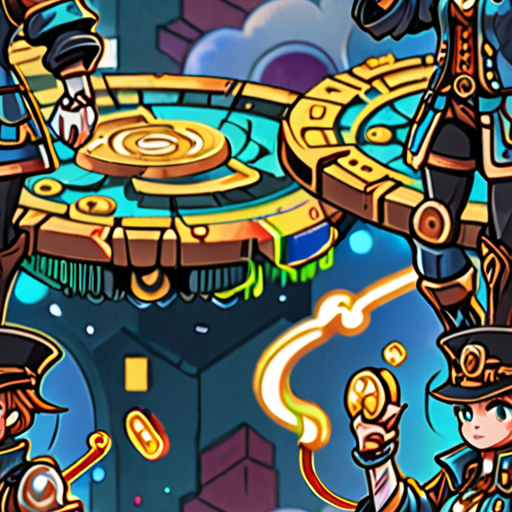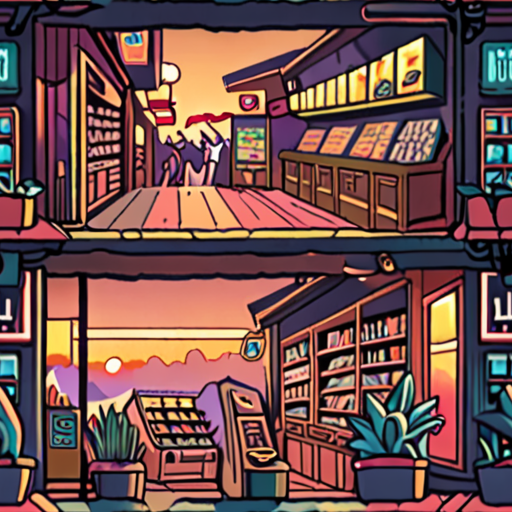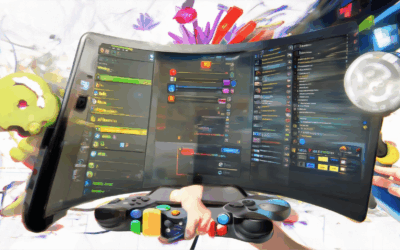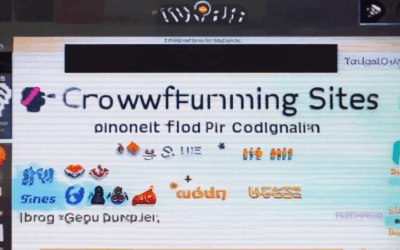In today’s competitive gaming landscape, indie game developers face numerous challenges in creating a pricing strategy that balances revenue goals with player affordability and satisfaction. As the gaming industry continues to evolve, understanding the intricacies of indie game pricing strategies has become crucial for success. From determining the optimal price point to leveraging effective marketing tactics, mastering indie game pricing strategies can make all the difference between a game’s commercial failure and its triumphant rise to fame.

Pricing Strategy of a Game
The pricing strategy of a game refers to how a game developer sets the price of their game to maximize revenue and profitability.
-
Understanding Target Audience
To determine the optimal price for a game, developers need to understand their target audience and what they are willing to pay.
-
Market Research
Conducting market research helps developers gather valuable insights into consumer behavior and preferences.
-
Competitor Analysis
Analyze competitors’ pricing strategies to identify gaps in the market and opportunities for differentiation.
-
-
Setting Prices Based on Value
Developers should set prices based on the perceived value of their game to gamers.
-
Free-to-Play Model
A free-to-play model allows players to download and play the game without paying upfront costs.
-
Freemium Model
A freemium model offers basic features for free and charges for premium features or content.
-
Pay-to-Play Model
A pay-to-play model requires players to purchase the game before accessing its content.
-
-
Sustainable Business Model
A sustainable business model ensures that the game remains profitable over time.
-
Monetization Strategies
Implement various monetization strategies, such as in-game purchases, subscriptions, or advertising, to generate revenue.
-
Regular Updates and Support
Regular updates and support help maintain player engagement and attract new customers.
-
-
Key Considerations
When determining the pricing strategy for a game, consider factors such as production costs, market conditions, and competition.
-
Production Costs
Calculate the total cost of developing and publishing the game, including personnel, equipment, and marketing expenses.
-
Market Conditions
Assess the overall state of the gaming market, including consumer demand, competition, and economic trends.
-
Pricing Strategy for Indie Music Experiences and High End Merchandise
We understand the importance of finding the perfect price point for our unique offerings.
- Cost-Based Pricing
- Value-Based Pricing
- Competitive Pricing
- Dynamic Pricing
This approach involves calculating the costs associated with producing and delivering our products, then adding a markup to determine the final price.
We set prices based on the perceived value of our products to customers, taking into account factors like quality, uniqueness, and exclusivity.
Our prices are compared to those of similar products offered by competitors in the market, allowing us to stay competitive and attract customers.
We adjust our prices in real-time based on demand, seasonality, and other market conditions to maximize revenue and profitability.
In addition to these strategies, we also consider psychological pricing techniques, such as:
- Odd-Number Pricing
- Price Anchoring
- Bundling and Unbundling
We use odd-number pricing to make our products seem cheaper than they actually are, as customers tend to perceive lower prices as better values.
We use high-list-price anchoring to make our products seem more affordable by comparing them to higher-priced alternatives.
We offer bundles and discounts to incentivize customers to purchase more, while also unbundling products to appeal to customers who want to buy individual items.
To further boost sales, we utilize promotions and discounts strategically, taking care not to cannibalize future sales or devalue our products.
By combining these pricing strategies and techniques, we aim to find the sweet spot that balances revenue goals with customer affordability and satisfaction.

Marketing an Indie Game Successfully
As an indie game developer, effectively marketing your game can be a daunting task, but with the right strategy, you can increase visibility, attract players, and ultimately drive sales.
- Define Your Target Audience
- Create a Strong Online Presence
- Build a Community
- Network and Collaborate
- Optimize for Search Engines
- Run Effective Advertising Campaigns
- Analyze and Adjust
Determine who your ideal player is, what type of games they enjoy playing, and what platforms they prefer. This will help you tailor your marketing efforts to reach the right people.
Develop a professional website that showcases your game, its features, and its story. Utilize social media platforms to share updates, behind-the-scenes content, and engage with potential players.
Foster a loyal community around your game by hosting events, contests, and giveaways. Encourage feedback and involve players in the development process to build trust and excitement.
Attend gaming conventions, join online communities, and partner with influencers or other developers to expand your reach and gain exposure.
Ensure your website and online presence are optimized for search engines by using relevant keywords, meta descriptions, and optimizing images.
Utilize targeted advertising on platforms like Facebook, Twitter, and Google Ads to reach your target audience and drive traffic to your website.
Monitor your marketing efforts’ effectiveness and adjust your strategy accordingly. Use analytics tools to track engagement, conversions, and revenue to inform future decisions.
Additional Tips
Consider offering demos, trials, or early access to generate buzz and encourage word-of-mouth marketing. Leverage user-generated content, such as screenshots and videos, to showcase your game’s unique features.
Stay Up-to-Date
Keep abreast of the latest gaming trends, platform updates, and marketing strategies to stay ahead of the competition and adapt to changing consumer preferences.
Be Authentic and Patient
Building a successful indie game takes time, effort, and perseverance. Stay true to your vision, engage with your community, and continually improve your marketing strategy to achieve long-term success.

Pricing Models for Independent Game Developers
We understand the importance of finding the perfect balance between revenue and player satisfaction for independent game developers.
-
Dynamic Pricing
Dynamic pricing involves adjusting prices based on market conditions, competition, and player behavior.
This approach allows developers to capitalize on peak demand periods, such as during holidays or special events, while also avoiding price wars with competitors.
For example, a developer could increase the price of their game during a holiday sale, knowing that players are more likely to purchase it due to the festive atmosphere.
-
Value-Based Pricing
Value-based pricing focuses on the perceived value of the game to the player, rather than its actual cost.
This approach involves setting prices based on the game’s unique features, gameplay mechanics, and overall experience.
A developer might charge a premium for a game with exceptional graphics, immersive storytelling, or innovative gameplay mechanics.
-
Freemium Model
The freemium model offers a basic version of the game for free, with optional in-game purchases or upgrades available for a fee.
This approach allows developers to attract a large player base, generate revenue through microtransactions, and encourage players to upgrade to premium versions of the game.
For example, a developer could offer a free-to-play version of their game, with optional in-game purchases for cosmetic items, power-ups, or exclusive content.
-
Subscription-Based Model
The subscription-based model involves charging players a recurring fee for access to the game, its updates, and additional content.
This approach provides a steady stream of revenue for developers, encourages player loyalty, and allows for ongoing support and updates.
A developer might charge a monthly or annual subscription fee for access to their game, with bonus content, exclusive rewards, or priority customer support available for subscribers.
-
Pay-Per-Play Model
The pay-per-play model involves charging players a flat fee for individual play sessions or levels.
This approach provides a predictable revenue stream for developers, encourages players to try out the game before committing to a full purchase, and allows for flexible pricing options.
A developer might charge $0.99 per level, with discounts available for bulk purchases or loyalty programs.
Ultimately, the most effective pricing model for independent game developers depends on their target audience, game genre, and business goals.
By understanding the strengths and weaknesses of each pricing model, developers can choose the approach that best suits their needs and maximizes revenue without alienating their target audience.
Optimizing Indie Game Price Points
When it comes to pricing indie games, finding the sweet spot between revenue goals and player affordability can be a daunting task.
- Market Trends: Analyze current market prices for similar games in your genre to determine a fair and competitive price point.
- Target Audience: Consider the demographics and preferences of your target audience to ensure your price point aligns with their expectations.
- Competition: Research your competitors’ pricing strategies and adjust accordingly to stay ahead in the market.
- Revenue Goals: Set realistic revenue targets based on your game’s production costs, marketing expenses, and projected sales.
- Player Satisfaction: Prioritize player satisfaction by offering discounts, promotions, or loyalty programs to incentivize purchases and foster a loyal community.
Pricing Strategies for Indie Games
- Dynamic Pricing: Adjust your game’s price in real-time based on market conditions, player behavior, and seasonal fluctuations.
- Discounts and Promotions: Offer limited-time discounts, bundle deals, or loyalty rewards to drive sales and increase player engagement.
- Early Access and Beta Testing: Utilize early access and beta testing phases to gather feedback, test pricing models, and refine your game before launch.
- Seasonal Pricing: Adjust your game’s price according to seasonal demand, holidays, or special events to maximize revenue potential.
- Loyalty Programs: Implement loyalty programs or subscription services to reward repeat customers and encourage continued support.
Best Practices for Indie Game Pricing
- Transparency: Clearly communicate your pricing strategy and reasoning to players to build trust and credibility.
- Flexibility: Remain open to adjusting your pricing model based on player feedback, market changes, or unexpected circumstances.
- Analytics: Monitor player behavior, sales data, and revenue streams to inform future pricing decisions and optimize your strategy.
- Community Engagement: Foster a strong community around your game by engaging with players, responding to feedback, and incorporating suggestions into your pricing strategy.
Conclusion

Effective Pricing Approaches for Indie Game Developers
We’ve analyzed various pricing strategies employed by successful indie game developers to attract players while maximizing revenue.
-
Pricing Tiers
Offering multiple pricing tiers allows players to choose the version that suits their budget and preferences. This approach can increase revenue by catering to different segments of the market.
-
Dynamic Pricing
Dynamically adjusting prices based on demand, competition, and other factors helps optimize revenue. This strategy requires continuous monitoring and analysis to ensure price adjustments align with market conditions.
-
Free-to-Play Models
Free-to-play models have become increasingly popular among indie game developers. By offering free games with optional in-game purchases, developers can attract a large player base and generate revenue through microtransactions.
-
Early Access and Beta Testing
Releasing games in early access or beta testing phases allows developers to gather feedback, identify issues, and refine their products before full release. This approach can also generate revenue through pre-orders and early adopter sales.
-
Season Passes and DLCs
Offering season passes and downloadable content (DLCs) provides additional revenue streams for developers. These can include new levels, characters, or game modes that extend the game’s lifespan and encourage repeat purchases.
-
Subscription-Based Models
Subscription-based models offer players access to exclusive content, regular updates, and priority customer support. This approach can generate recurring revenue for developers and foster a loyal player base.
Best Practices for Indie Game Developers
To successfully implement these pricing strategies, indie game developers should:
-
Conduct Market Research
Analyze the target audience, competition, and market trends to determine the most effective pricing approach.
-
Monitor Player Feedback
Gather feedback from players to adjust pricing strategies and ensure they meet player expectations.
-
Continuously Analyze Performance
Regularly review revenue, player engagement, and other key performance indicators to optimize pricing strategies and make data-driven decisions.
Conclusion
By implementing effective pricing strategies and following best practices, indie game developers can attract players, maximize revenue, and establish a strong presence in the competitive gaming market.




0 Comments